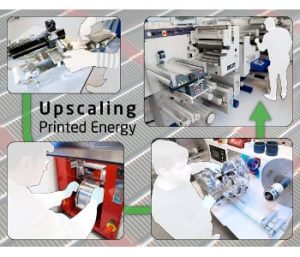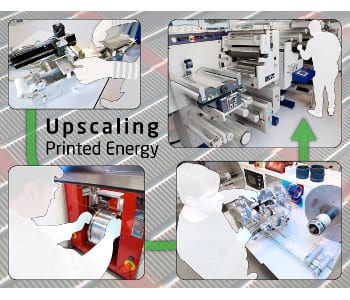 Energy conversion defines humankind and in our ever-increasing capacity as “energy converters” we have invented, devised and constructed a near endless list of contraptions for the purpose. The intensity and also the efficiency with which we convert energy have increased and a relatively large research effort is dedicated to the purpose of both inventing new means and making existing means more efficient.
Energy conversion defines humankind and in our ever-increasing capacity as “energy converters” we have invented, devised and constructed a near endless list of contraptions for the purpose. The intensity and also the efficiency with which we convert energy have increased and a relatively large research effort is dedicated to the purpose of both inventing new means and making existing means more efficient.
Efficiency is the preferred yardstick used to compare and measure energy technologies up against each other, but with the increased focus on sustainability and increased environmental awareness, the impact on the planet is also becoming an important measure and has gained a special status, where in some cases it has the decisive vote on a new energy technology.
In our quest for better efficiency and low impact, new qualifiers have emerged that answer to what happens when scaling up to a large volume to suit the demand, in terms of not only environmental impact but also the availability of resources, the speed of manufacture, and the energy consumed in the process of manufacturing. When these parameters enter the equation, a high nominal efficiency is suddenly not enough to come out on top.
Printed energy technologies have attracted a great deal of attention because of the manufacturing avenue that becomes available upon choosing this approach. Printing enables fast roll-to-roll manufacturing, which can imply that the energy invested in the product is reduced, thus significantly shortening the energy payback time. This implies that a printed energy technology can pay for itself (in terms of capital and up-front costs) more quickly and with lower environmental impact, even if the nominal efficiency is lower than a comparatively more efficient technology that requires a large initial investment. This also has the significant advantage that constraints on operational lifetime can become more relaxed.
A new special issue of Energy Technology addresses areas where the energy technology can be printed, thus taking advantage of the fast mode of manufacturing that the printing and coating approach grants access to, by bringing together experts that highlight some of the key efforts in printed energy technologies, including solar cells, batteries, light-emitting diodes, and others.
The work of Hösel et al. gives an overview of the printing machinery that is available for the manufacture of printed energy technologies and also highlights how the availability of differently sized equipment is central in the process of scaling any given energy technology up from needle-point-sized lab discovery devices to industrial size, which covers many orders of magnitude in terms of device area and the device area produced per unit time.
Several energy technologies are highlighted in this issue with the majority having focus on printing methods for solar cells or sub-components, however other interesting technologies are also presented, including novel low-impact printable light sources, printable heaters, printable piezoelectrics for harvesting mechanical energy, and printable batteries for power storage.
Printable batteries are reviewed by Gaikwad et al. where the mechanical properties are especially addressed in great detail with an overview of device architectures, manufacturing methods, and an insightful outlook.
Light-emitting technologies manufactured using printing are described in two accounts using two different device technologies. The light-emitting electrochemical cells are described by Sandström and Edman where a detailed account of the rapid development is given along with a strong coupling to manufacturing methods. Youn et al. give an insightful account of recent developments on more traditional polymer light-emitting devices based on approaches that employ nanostructuring.
Mechanical energy can also be harvested and converted into electrical energy using printed piezoelectric materials as described by Ding et al. using in situ poled nanofibers. Thin printed conductors that can be used as infrared disposable heating elements are described by Walia et al.
Solar cells are extensively addressed from the textured antireflective hard coatings described by González Lazo et al. through a series of overview and Review manuscripts that address the closure of the efficiency gap between hero devices and scaled devices by Lucera et al.. An overview of specific techniques such as spray coating for preparation of organic photovoltaics (OPV) by Reale et al., a study on the use of roll-to-roll gravure printing for preparation of zinc-oxide-based electron selective contacts by Vilkman et al., and an article on methods for realization of graded bulk heterojunctions by Bottenfield et al. significantly add to the discussion. Finally there are device-specific stability studies presented in a round-robin study for fully coated flexible polymer tandem solar cells and modules presented by Livi et al. and a series of manuscripts presenting roll-to-roll manufacture of polymer solar cells using a particular philosophy or layer type such as roll-to-roll evaporated back electrodes as presented by Griffith et al. and the use of slot–die coating alone to create the solar cell stack using roll-to-roll methods as described by Andersson.
With this special issue a few good hours of reading is provided giving the reader detailed insight into manufacturing methods and examples of printable energy technologies to highlight the state of the art, how to get there, and who is currently active in the field. Printable energy technologies make up a research field and a technical field in rapid development, and we will almost certainly see the outcome of these efforts enter society in the coming years for the storage and harvest of energy as well as the energy-efficient use of light and energy management.
 Frederik C. Krebs is currently head of section for solar energy and professor at the Technical University of Denmark (DTU) with research focus on foil-based energy systems (thermoelectrics, PEMFCs, photocatalysts, light-emitting devices, solar cells) and organic electronics (LECs, LEDs, OTFTs, electrochromics, OPV, perovskite solar cells). Roll-to-roll processing is the central manufacturing method, which enables high speed and low environmental impact. His research group has demonstrated use of roll-to-roll processing for: electrochromics, new materials for devices with increased stability, advanced device structures (tandem polymer solar cells), large-scale manufacture, product integration, lifecycle analysis, recycling, installation, and operation.
Frederik C. Krebs is currently head of section for solar energy and professor at the Technical University of Denmark (DTU) with research focus on foil-based energy systems (thermoelectrics, PEMFCs, photocatalysts, light-emitting devices, solar cells) and organic electronics (LECs, LEDs, OTFTs, electrochromics, OPV, perovskite solar cells). Roll-to-roll processing is the central manufacturing method, which enables high speed and low environmental impact. His research group has demonstrated use of roll-to-roll processing for: electrochromics, new materials for devices with increased stability, advanced device structures (tandem polymer solar cells), large-scale manufacture, product integration, lifecycle analysis, recycling, installation, and operation.

















